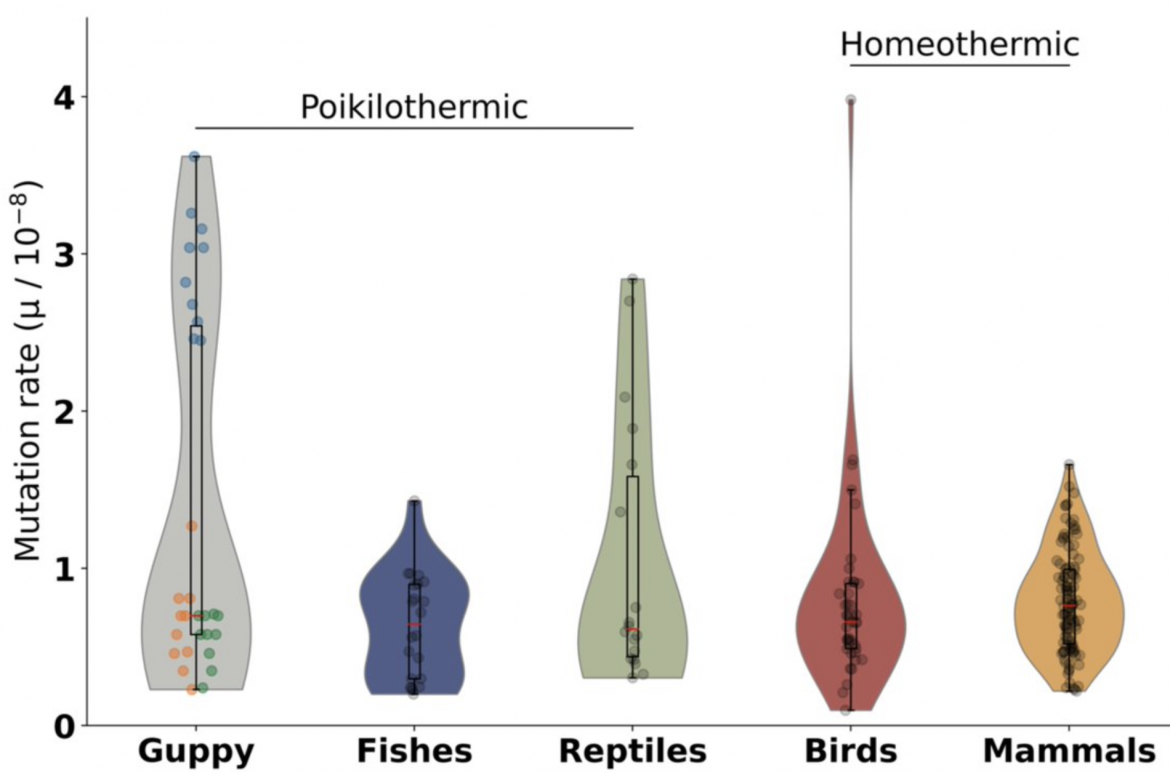
Fig. 3 Distribution of trio DNMs in different animals. Distribution of trio DNM rate across209 different groups of poikilothermic animals, including fishes and reptiles, and homeothermic210 animals, including birds and mammals. Each data point represents a DNM rate in a parent-211 offspring trio. Three families in the guppy categories Fam1 (orange), Fam2 (blue) and Fam3
Abstract
The rate of germline mutation is fundamental to evolutionary processes, as it generates the variation upon which selection acts. The guppy, Poecilia reticulata, is a model of rapid adaptation, however the relative contribution of standing genetic variation versus de novo mutation to evolution in this species remains unclear. Here, we use pedigree-based approaches to quantify and characterize de novo mutations (DNMs) in three large guppy families. Our results suggest germline mutation rate in the guppy varies substantially across individuals and families. Most DNMs are shared across multiple siblings, suggesting they arose during early zygotic development. DNMs are randomly distributed throughout the genome, and male-biased mutation rate is low, as would be expected from the short guppy generation time. Overall, our study demonstrates remarkable variation in germline mutation rate and provides insights into rapid evolution of guppies.